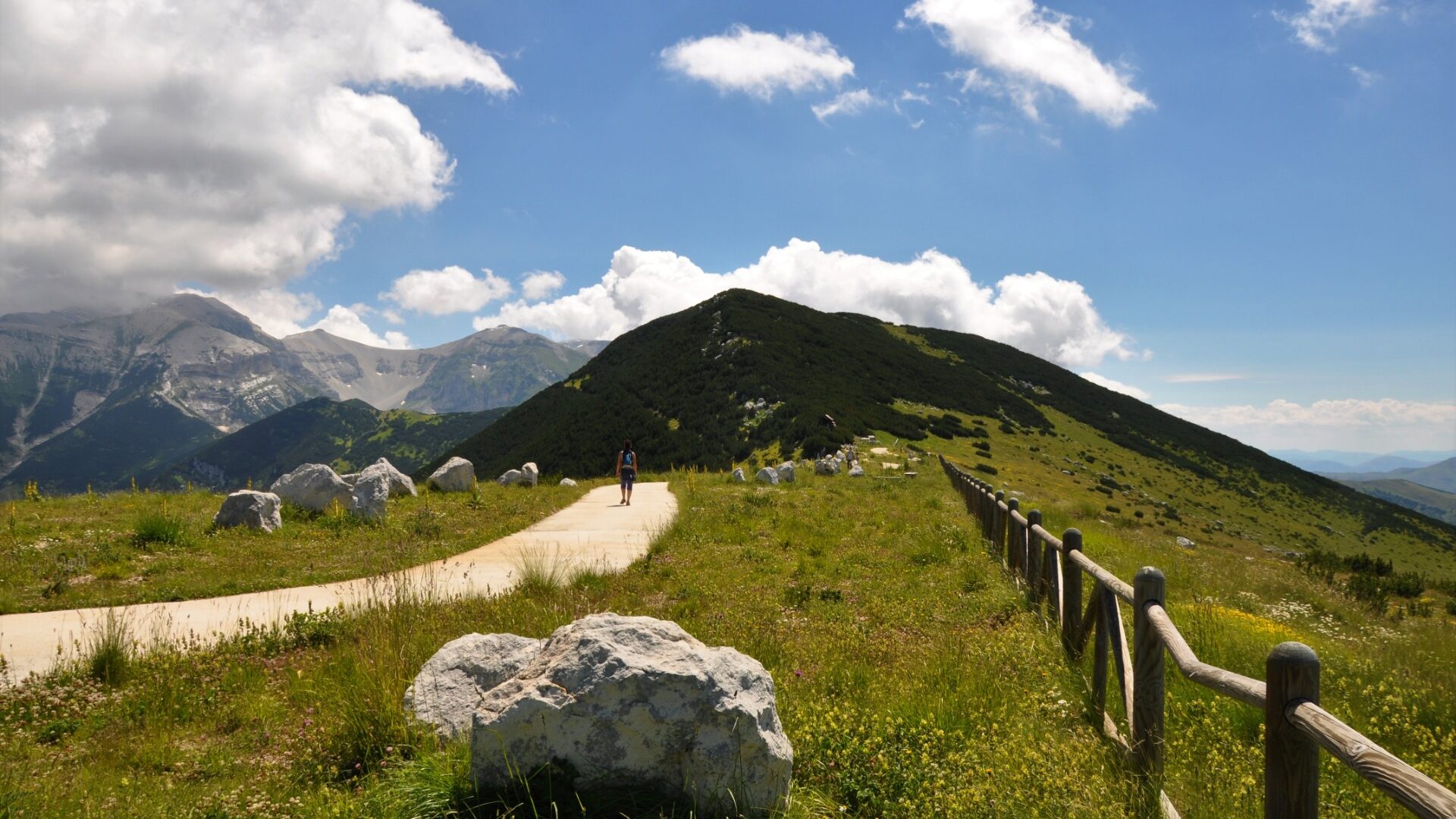Are you planning to spend more time being in nature, hiking and walking in the Italian mountains? It’s an excellent idea, and we have some useful tips for anyone willing to experience this kind of hiking. Before you start planning, keep in mind that relying on a qualified guide who knows the area and can show you its hidden beauties is always a good idea. Everything you will read in this article is for information purposes only. Reading and implementing the following tips won’t make you an expert hiker, but it will help you!
How do I choose my first path?
Every mountain offers many geographical features: woodlands, rivers, waterfalls or breathtaking landscapes. After choosing which landscape is more intriguing for you, check with the local information center or alpine club to find out all trails in your area of interest. When choosing a trail, pay attention to the difficulty level.
Every path has a rating that identifies its level of difficulty. The CAI (Italian Alpine Club) developed a hiking rating system to show the difficulty of hiking routes.
- T (tourist) trails that do not require hiking experience or physical training
- E (hiker) A good sense of orientation and some hiking experience are required to enjoy these trails.
- EE (expert hikers) these trails are for experienced hikers in strong physical condition and with a good sense of direction. Proper footwear, clothing and equipment are also required.
- EEA (expert hikers with climbing equipment) these routes should be approached by hikers with mountain terrain experience and climbing equipment training.
When approaching a mountain for the first time, choose a type T (tourist) trail. These routes are usually found on minor roads, mule paths or easy trails. These paths are generally fairly short in distance and well marked, and require no specific training. You can find them close to small villages, tourist resorts or roads and they are usually of some cultural, touristic or recreational interest.
If you want to take your dog with you on the trail, please remember that some areas inside National Parks are marked as “areas of biological interest” where pets are not allowed. Make sure you read the access rules before choosing a trail and keep your pet on a leash.
If you have any health condition, remember to check the altitude when choosing a trail. In case of doubt, ask your doctor for advice. Altitude should also be considered by those who want to bring their children with them. Not all altitudes are recommended for children, so ask your pediatrician before planning your route.
Seasons are also to be considered when choosing a trail. For example, August is not the best time to visit a waterfall, since the water flow is minimal. If you choose a path close to a river, it can be dangerous during months where heavy rains are frequent or snow thaws.
Before starting your hike
Check the weather: mountain weather can change quickly, so it’s a good idea to check at least two different weather forecasts the evening before departure. We recommend www.3bmeteo.com and www.meteoam.it
Look for information about the path: sometimes paths may be closed or bumpy (for many reasons).
Check whether fresh water sources are available on the trail: before filling your backpack with bottles of water that could weigh you down, check if fountains or drinkable water sources are available along the trail.
The primary rules every hiker should follow
- Avoid hiking alone. Bring along at least another person for safety reasons. Your hiking companion can assist you in case of slight illness or ankle sprain. Always tell someone where you are headed or leave a note in your car with the destination written on it.Never leave a marked path.
- Don’t pick plants or flowers, let everyone enjoy the beauty of nature.
- Do not disturb the fauna and do not leave food for wild animals.
- Do not throw stones or other objects along the path, they could be a danger for other hikers.
- Do not leave rubbish of any type. Take everything back with you or use the trash bins whenever possible.
- If you are inside a canyon, beware of the wind. If it gets too strong, get out as soon as possible, as it could cause stones to fall from above.
- In case of accident, call 118 and provide any information required to allow a quick rescue intervention by the National Corps for Mountain and Speleological Rescue (CNSAS).
Many unexpected events can happen on a mountain. But with a responsible, careful and respectful approach, you will experience unique emotion and infinite beauty.
Have fun!
Lisa Cantagallo AIGAE guide


